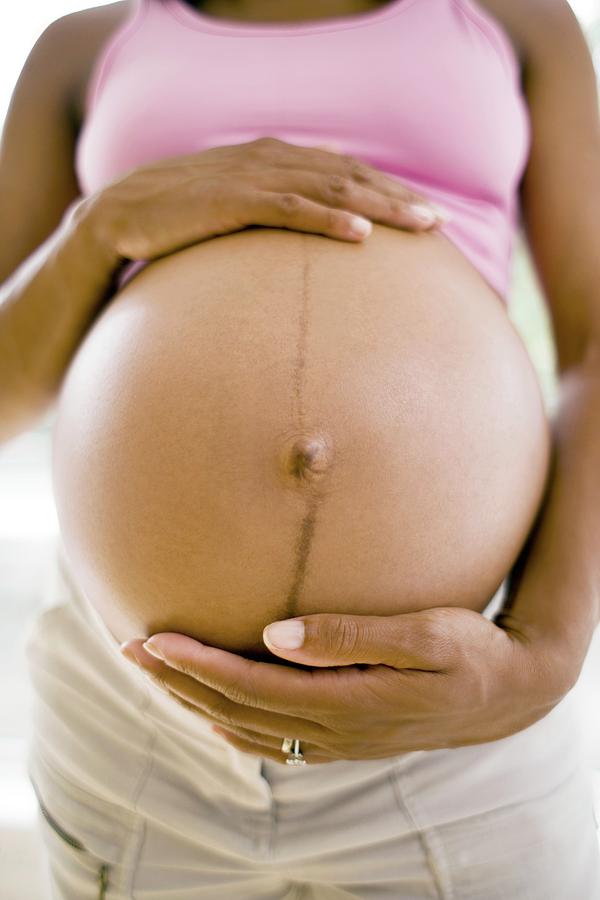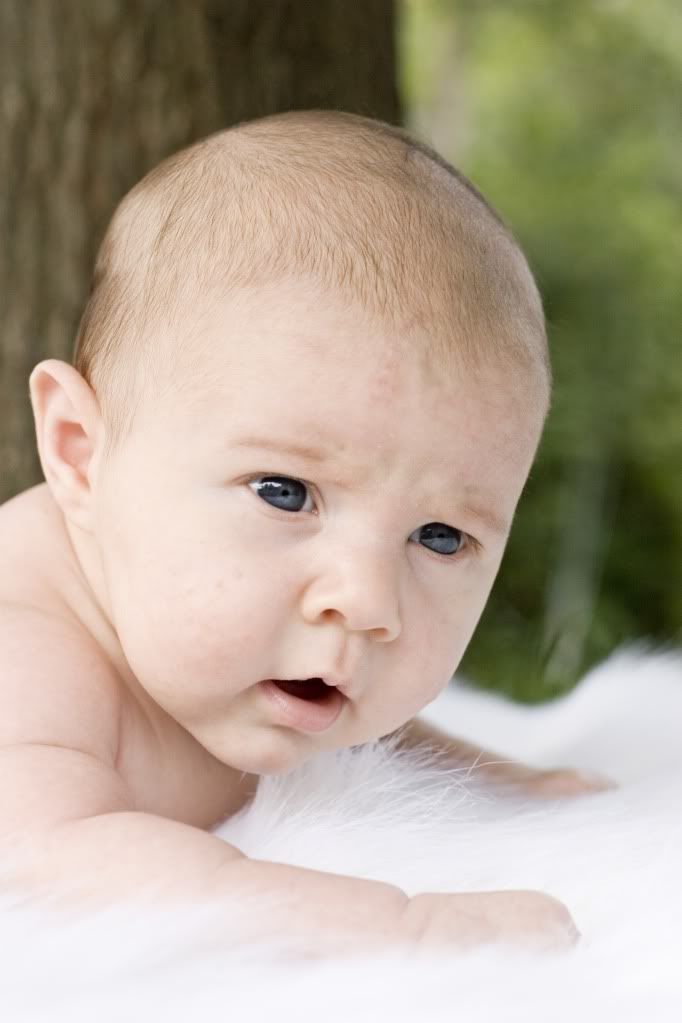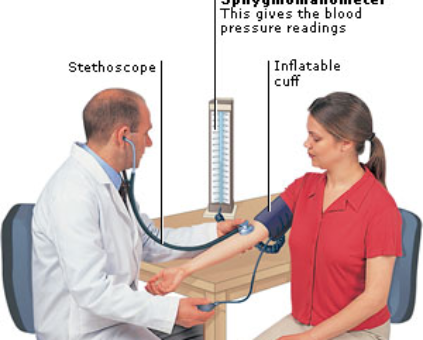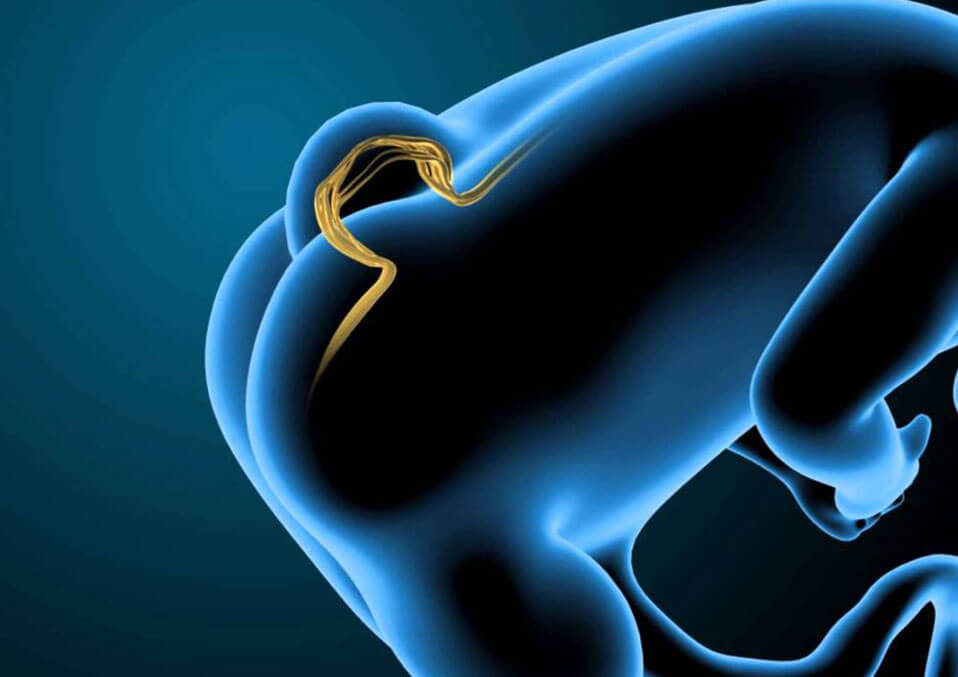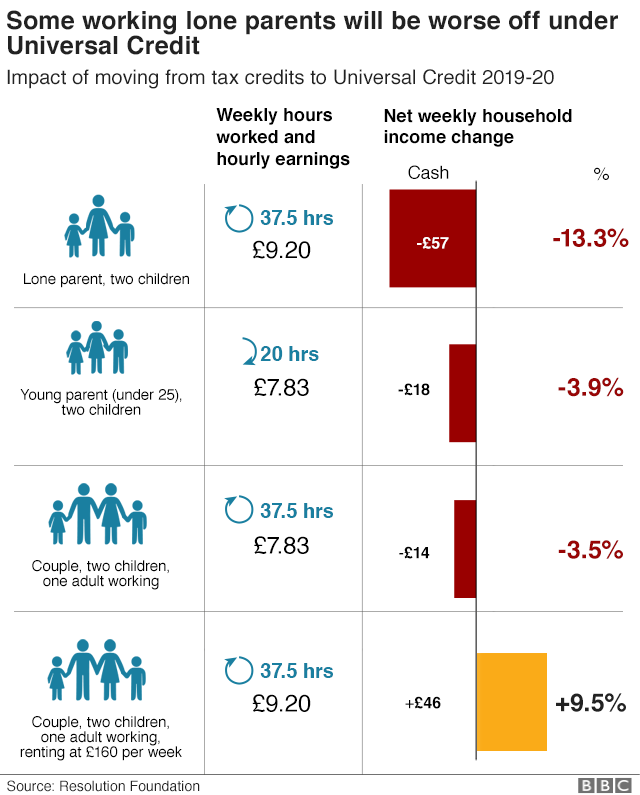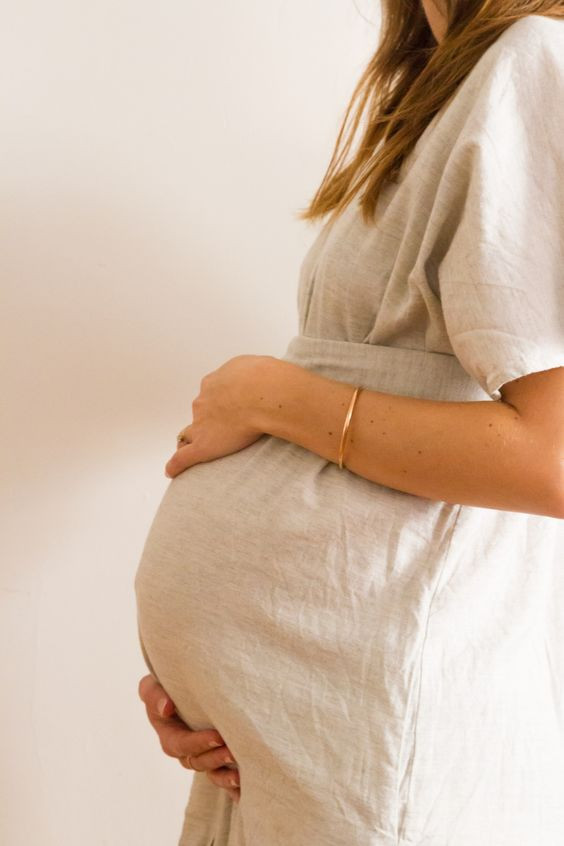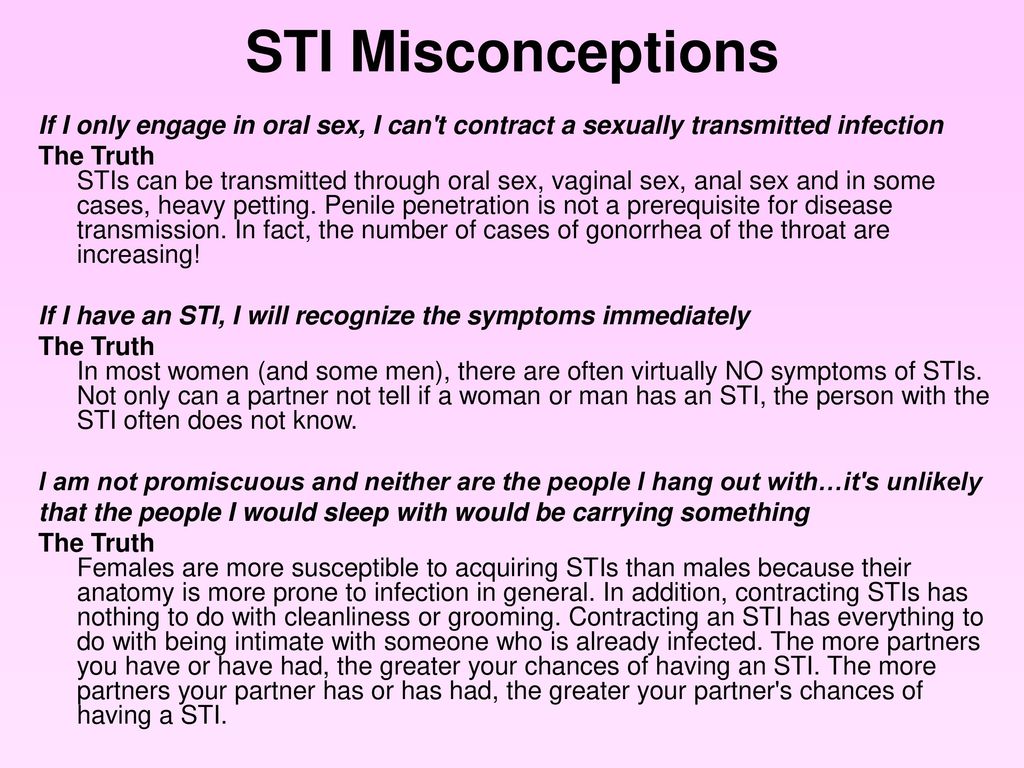How can two lesbians have a baby
How Can a Same Sex Female Couple Have a Baby? The Ultimate Guide
Getting married and having children is something many of us look forward to from the time we ourselves are children. We play with baby dolls and cuddle relatives’ babies, dreaming of the day we can have our own. But if you are in a same-sex female relationship, you may find yourself asking the question, “How can a same-sex female couple have a baby?”
Thanks to the miracle of modern medicine, lesbian couples can now not only adopt children but give birth to their own. Read on to learn more about the different options available for lesbian couples looking to become parents.
Pregnancy vs. Adoption
Before we dive into the different ways lesbian couples can have a baby, let’s talk a little about the pregnancy vs. adoption question. Adoption is an obvious solution for same-sex couples looking to have a baby and in many cases, adoption is a win-win situation; the couple gets to raise a child, and a child who needed a good home and parents gets an amazing family.
Most couples however will want to have a baby that is genetically their own or want the experience of pregnancy and delivery. In these cases, it is possible for same-sex female couples to have a baby that is related to one of the partners. As we will discuss more later, it may someday be possible for same-sex couples to have a baby that is genetically both of theirs.
Selecting a Sperm Donor
Most of the options for same-sex female couples to have a baby involve intrauterine insemination using a sperm donor. During this process, couples will select a sperm donor from a donor sperm bank with the assistance of a fertility clinic. Once the donor sperm is selected, the sperm will be sent to the fertility clinic. The sperm donor, usually anonymous, will serve as your baby’s biological father.
You can also ask for a sperm donation from close friends if you feel comfortable doing so although involving someone you know is not as easy as it may at first seem.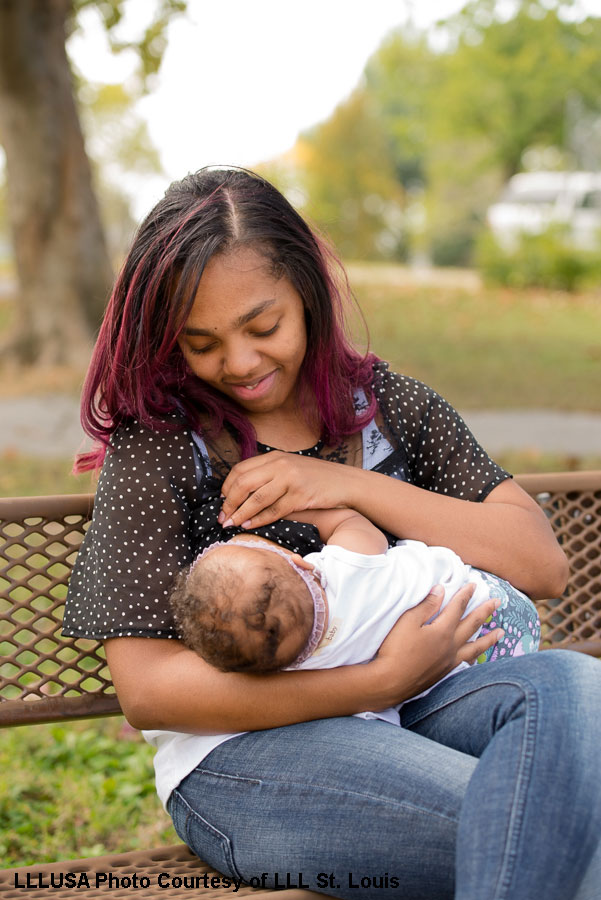 Some same-sex male couples are even interested in serving as sperm donors in a co-parenting situation, which we’ll discuss later.
Some same-sex male couples are even interested in serving as sperm donors in a co-parenting situation, which we’ll discuss later.
Donor Intrauterine Insemination
Donor intrauterine insemination happens in a fertility clinic under the direction of the physician. Be sure to talk to your doctor about what you can do before the appointment to give things the best chance to go right. These procedures often involve taking medication such as Clomid to stimulate your ovaries and involve close monitoring by your doctor. When your doctor determines that you are ready, the intrauterine insemination will be performed which is relatively painless. In this procedure, a catheter is inserted through your cervix and the donor sperm gets injected directly into your uterus. This increases the chance of your becoming pregnant (compared to normal intercourse), especially since it bypasses the issue of poor cervical mucus.
In Vitro Fertilization
In vitro fertilization is one of the most popular options for same-sex couples looking to have a baby. This process is more involved and costly than intrauterine insemination with donor insemination. However, it can triple your chance of becoming pregnant and lessen the risk of twin or triplet pregnancies which is safer for your health.
This process is more involved and costly than intrauterine insemination with donor insemination. However, it can triple your chance of becoming pregnant and lessen the risk of twin or triplet pregnancies which is safer for your health.
During in vitro fertilization, a doctor will harvest eggs directly from your ovaries after giving you fertility medication to promote egg development. They will then inject sperm directly into the eggs or will allow them to interact and fertilize in a lab. These embryos will be incubated for 5 days and then frozen for transfer back to your uterus in the following 6-8 weeks. The freezing process results in higher pregnancy rates and allows your embryos to be genetically tested, if you desire, prior to returning them to your uterus.
Reciprocal IVF and Surrogacy
Some same-sex couples opt to use a procedure called reciprocal IVF to have a baby. Rather than one partner donating the eggs and carrying the baby, one partner will donate the eggs which will be implanted into the other partner’s uterus.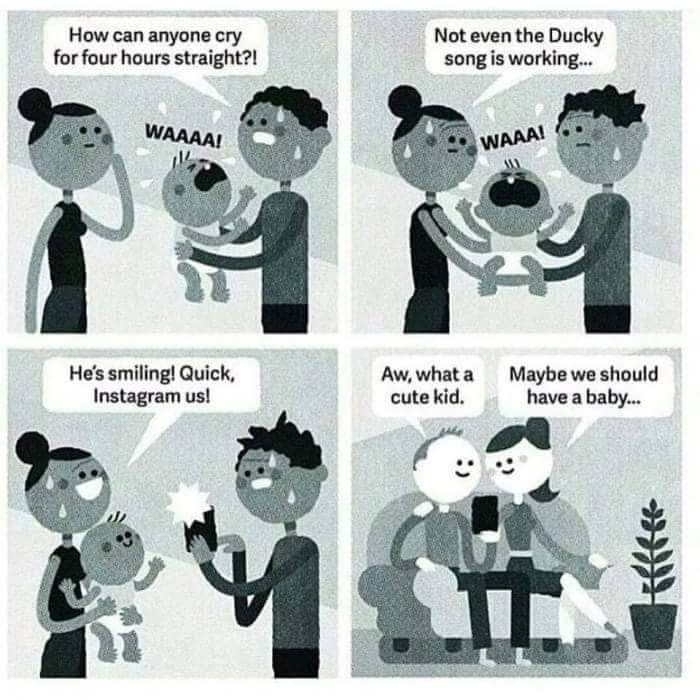 This is a good option for couples who want both parents involved in the pregnancy and birth process.
This is a good option for couples who want both parents involved in the pregnancy and birth process.
In some cases, same-sex couples may also choose to have a surrogate carry their baby. This is most commonly done when one or both partners have problems with their uterus or if it not safe for either of them to become pregnant due to medical reasons. The donated egg from one partner may be implanted into another person who will carry the baby for them. However, this process can be very costly and can have some tricky legal ramifications, so it requires some careful forethought.
Co-Parenting
In some cases, same-sex female couples may choose to arrange a co-parenting situation with a same-sex male couple. Both couples want children and cannot have them through traditional methods, so they team up and form a close-knit parenting team.
In a co-parenting situation, one of the partners from the same-sex male couple provides the sperm donation for the artificial insemination procedure.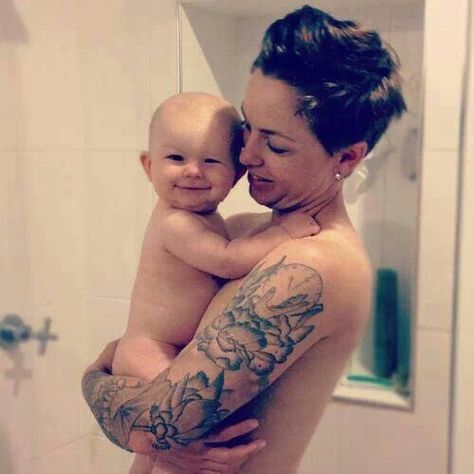 One of the partners in the same-sex female couple carries the baby and gives birth. All four parents then work together to raise the child.
One of the partners in the same-sex female couple carries the baby and gives birth. All four parents then work together to raise the child.
Co-parenting can be an amazing option for those who want their child to know their biological father, but it can be complicated from a legal and practical standpoint. If you and your partner plan to go this route, you will need to have extended discussions with your co-parents about how you will handle everything from living situations and custody to schooling, discipline, and finances.
Transgender Partners
If one partner in a same-sex female couple is a transgender woman, you may be able to have a child that is genetically connected to both of you. If that partner is pre-transition, their body will still be producing sperm. Depending on their medical situation, that sperm may be healthy enough to fertilize the other partner’s egg or frozen for later use during intrauterine insemination (IUI) or In Vitro Fertilization (IVF) treatment cycles. In this situation, you have more options for conceiving. You will need to consult with a doctor to figure out what the best option is for you and your partner.
In this situation, you have more options for conceiving. You will need to consult with a doctor to figure out what the best option is for you and your partner.
Adoption
Of course, adoption can always be a wonderful option for same-sex female couples interested in having a baby. At any given time, there are more than 125,000 children in the foster care system who are eligible for adoption. You can give these children a loving home with your partner.
If you decide to adopt, be aware that you may fight some lingering bias against same-sex couples in the system. Some social workers may want to make extra demands or try to give you only “problem” children. Know your rights and be prepared to stand up for them during the adoption process – you have just as much right to adopt as anyone else.
Ongoing Research
There is some ongoing research that may one day make it possible for same-sex couples to have a child that is biologically connected to both of them. In 2018, a scientist at the University of Cambridge announced that their lab had a mouse pup that was born to two fathers. It may be possible to use stem cells from one parent to create a sperm with a woman’s DNA in it.
In 2018, a scientist at the University of Cambridge announced that their lab had a mouse pup that was born to two fathers. It may be possible to use stem cells from one parent to create a sperm with a woman’s DNA in it.
This research is ongoing, and it will be a long time before this procedure is medically approved for human use. Mice are much less complex than humans, and a lot more experimentation will be necessary. But someday, same-sex couples may be able to have a baby that is biologically both of their children.
Deciding on the Best Method for You
There is no one right answer to what the right way to have a baby is. Which method you choose will depend on your and your partner’s wishes and on each of your medical situations. There are a lot of factors that will impact your decision.
Start by sitting down and having a conversation with your partner about what you both want from your parenting experience. Discuss your financial resources and what you know of your reproductive health, then make an appointment with your doctor to discuss the best medical options for both of you.
Answer, “How Can a Same-Sex Female Couple Have a Baby?”
There are many right answers to the question, “How can a same-sex female couple have a baby?” From intrauterine insemination to adoption to co-parenting, you have a lot of options available to you. Which one you choose will be a personal discussion you and your partner will need to have.
If you’d like to get started on your parenthood journey, check out the rest of our site at Inovi Fertility and Genetics Institute. We’re committed to achieving the highest success rates while providing personalized care to our patients. Schedule an appointment today and take the first step in your journey towards becoming
Same-sex parents – two mums
Same-sex parents – two mums | Pregnancy Birth and Baby beginning of content5-minute read
Listen
There are more same-sex couple families than ever before in Australia. More than 10,000 children live with same-sex parents in this country, and a quarter of all female same-sex couples have children. If you are a same-sex couple, this article will help you consider the important questions about becoming a mum.
More than 10,000 children live with same-sex parents in this country, and a quarter of all female same-sex couples have children. If you are a same-sex couple, this article will help you consider the important questions about becoming a mum.
The options for becoming a parent
Same-sex families can be created in many different ways. One partner may have the baby, or you may choose to adopt. One or both of you may have children from a previous heterosexual relationship. Or you may have a co-parenting arrangement with a gay male couple.
If you are thinking of conceiving a child, there are several fertility options available.
The most common way for a woman in a same-sex relationship to become pregnant is to use donated sperm. Some women inseminate themselves at home, but many choose to be inseminated in a clinic using a process called intrauterine insemination (IUI). Sperm from a donor are injected directly into the womb and, hopefully, the woman will become pregnant. You don’t always need to take fertility drugs, and the procedure is quite quick and inexpensive. However, it doesn’t always work.
You don’t always need to take fertility drugs, and the procedure is quite quick and inexpensive. However, it doesn’t always work.
If you have fertility problems, in vitro fertilisation (IVF) is another option. This is when the sperm are introduced to the egg in the lab. The mother will need to take fertility drugs. IVF can be more expensive, and it also doesn’t always work.
Either way, you will need to find a sperm donor. This could be someone you know, or an unknown donor who has donated their sperm to a sperm bank.
If it is someone you know, think carefully about what you are looking for in a donor, what level of involvement you want him to have with the child, and why he would consider donating to you. Make sure you involve your partner in the discussions and give the potential donor plenty of time to think about it.
If you plan to use sperm from a sperm bank, the donor could be Australian or come from overseas. The sperm will have been carefully medically screened and the donor will have been told about his legal rights. Most assisted reproductive technology clinics can organise donated sperm for you.
Most assisted reproductive technology clinics can organise donated sperm for you.
If you are thinking about obtaining donor sperm from overseas, make sure you understand the laws and regulations of the country in question. Obtaining donor sperm from some countries could cause future problems both for you and the child, so it’s always better to think about local options if possible.
Deciding on roles
Same-sex female couples usually tend to parent equally. Because a lot of planning usually goes into having a baby in a same-sex couple, there's a lot of time to think about what it means to be a parent, what roles you will both have and who else will be involved in bringing up the child.
Research has shown that lesbian couples are more likely to share domestic duties and child care fairly than heterosexual couples. Both mums tend to have good quality relationships with the children.
There are different ways in which to involve the biological father or other men in family life.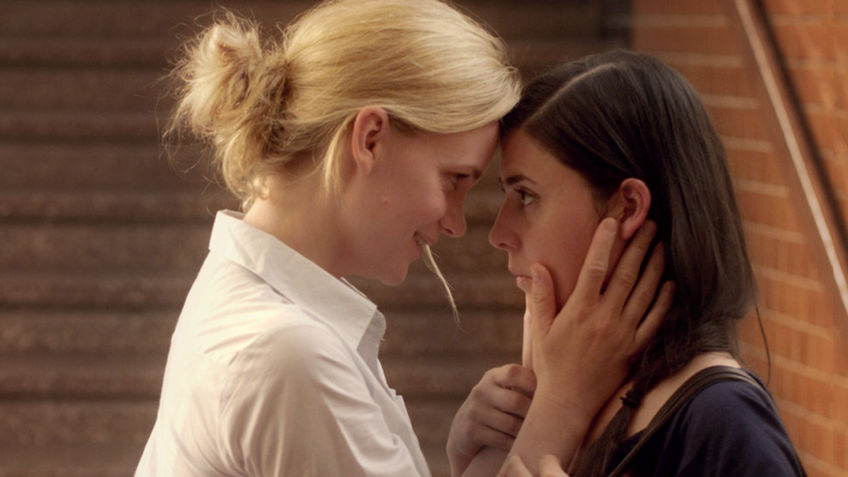 For example, the couple may use sperm donated by a friend who then plays a part in bringing up the child. Or they may introduce the children to fathers, brothers or other men as male role models.
For example, the couple may use sperm donated by a friend who then plays a part in bringing up the child. Or they may introduce the children to fathers, brothers or other men as male role models.
Social and psychological issues
Research has shown that children who grow up in same-sex families do just as well emotionally, socially and educationally as other children.
Children who have two mums may even have added advantages: they often experience higher quality parenting and they grow up to be more open minded about diversity. They are also likely to feel secure, close to their parents, and able to talk to them.
Even though there is more support than ever for same-sex families in Australia, some same-sex couples and their children are worried about being teased or bullied. It’s the treatment by others rather than growing up with two mums that may affect the child’s wellbeing.
Children usually find their own way of explaining their family set-up to other people.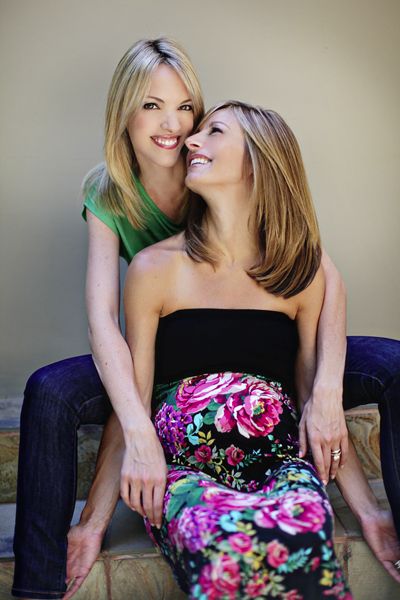 If you think your child is being bullied, it's important to step in quickly. Schools and teachers are trained to deal with issues like this.
If you think your child is being bullied, it's important to step in quickly. Schools and teachers are trained to deal with issues like this.
Work and legal issues
Under the law, a child born to a lesbian couple will usually have a birth mother and a lesbian co-mother. All states and territories legally recognise the co-mother in a lesbian relationship as the legal parent of children conceived during the course of the relationship. This means they have the same rights as heterosexual parents, for example, if they separate or divorce.
The sperm donor has no legal rights or responsibilities toward the child. The woman who gives birth to the child and her partner have full parental rights. When they turn 18, however, children conceived from a sperm donor have the right to information that identifies him.
Same-sex parents and their families have the same entitlements as everyone else. This includes, among other things, parental leave, tax, superannuation, social security and family assistance, the Pharmaceutical Benefits Scheme Safety Net and the Medicare Safety Net, immigration, citizenship, child support and family law.
If you are a same-sex parent, it's important to let Centrelink know. You will be assessed for entitlements in the same way as everyone else. Depending on your circumstances, you may be eligible for child support or Dad and partner pay. Visit the Department of Social Services for more information.
More information and support
- National LGBTI Health Alliance
- OUTspoken families: A resource kit for rainbow families
- PFLAG - Parents, Family and Friends of Lesbians and Gays
- QLife national counselling and referral service - call 1800 184 527
- Student Wellbeing Hub
Sources:
Australian Bureau of Statistics (Census of population and housing reflecting Australia), Medical Journal of Australia (What makes a same-sex parented family?), Human Fertilisation and Embryology Authority (UK) (Same sex couples), Victorian Assisted Reproductive Treatment Authority (Considering IVF, donor treatment or surrogacy overseas), Research Gate (Strengths and challenges in lesbian parenting), Australian Institute of Family Studies (Same-sex parented families in Australia), Australian Institute of Family Studies (Children's wellbeing in same-sex parented families), Australian Institute of Family Studies (Same-sex couple families in Australia), Raising Children (School-age bullying: helping your child), Australian Institute of Family Studies (Families, policy and the law), Australian Department of Social Services (Recognition of same-sex relationships)Learn more here about the development and quality assurance of healthdirect content.
Last reviewed: July 2020
Back To Top
Related pages
- Parental rights and finances
- Fertility treatments
- Same-sex parents - two dads
- Rainbow families
Need more information?
Same-sex families: services & resources | Raising Children Network
Like all families, rainbow and same-sex families need support. Get links to services for rainbow and same-sex parents, their children and their communities.
Read more on raisingchildren.net.au website
Same-sex parents - two dads
More than 10,000 Australian children live with same-sex parents. This article will help you consider the main questions about becoming a dad in a same-sex relationship.
Read more on Pregnancy, Birth & Baby website
Same-sex parenting: a family story | Raising Children Network
‘What makes us special isn’t our family structure, but just us’. Two mums talk about family life and the joys and challenges of being same-sex parents.
Read more on raisingchildren.net.au website
Rainbow families
The term ‘rainbow family’ refers to a family with parents of the same sex bringing up a child. Find out more how to overcome some of the challenges and tips for going forward.
Read more on Pregnancy, Birth & Baby website
Information for rainbow families
While many of the experiences for families are similar, rainbow families can have a number of unique experiences, joys and challenges.
Read more on Beyond Blue website
Disclaimer
Pregnancy, Birth and Baby is not responsible for the content and advertising on the external website you are now entering.
OKNeed further advice or guidance from our maternal child health nurses?
1800 882 436
Video call
- Contact us
- About us
- A-Z topics
- Symptom Checker
- Service Finder
- Linking to us
- Information partners
- Terms of use
- Privacy
Pregnancy, Birth and Baby is funded by the Australian Government and operated by Healthdirect Australia.
Pregnancy, Birth and Baby is provided on behalf of the Department of Health
Pregnancy, Birth and Baby’s information and advice are developed and managed within a rigorous clinical governance framework. This website is certified by the Health On The Net (HON) foundation, the standard for trustworthy health information.
This site is protected by reCAPTCHA and the Google Privacy Policy and Terms of Service apply.
This information is for your general information and use only and is not intended to be used as medical advice and should not be used to diagnose, treat, cure or prevent any medical condition, nor should it be used for therapeutic purposes.
The information is not a substitute for independent professional advice and should not be used as an alternative to professional health care. If you have a particular medical problem, please consult a healthcare professional.
Except as permitted under the Copyright Act 1968, this publication or any part of it may not be reproduced, altered, adapted, stored and/or distributed in any form or by any means without the prior written permission of Healthdirect Australia.
Support this browser is being discontinued for Pregnancy, Birth and Baby
Support for this browser is being discontinued for this site
- Internet Explorer 11 and lower
We currently support Microsoft Edge, Chrome, Firefox and Safari. For more information, please visit the links below:
- Chrome by Google
- Firefox by Mozilla
- Microsoft Edge
- Safari by Apple
You are welcome to continue browsing this site with this browser. Some features, tools or interaction may not work correctly.
ROPA technique MOTHERHOOD IN LESBIAN, BISEXUAL AND TRANSEXUAL COUPLES
Thanks to advanced technology and individually tailored treatments, modern seminal models can achieve pregnancy. For example, the ROPA method allows same-sex female couples to actively participate in the fertilization process. One of them is the genetic mother of the child, and the other is the biological
- Subscribe to newsletter
- I accept the terms of the user agreement and privacy policy
This field is used for verification purposes and should be left unchanged.
What is ROPA technology?
In vitro fertilization method ROPA (Use of partner eggs) or use of female partner's oocytes is one of the assisted reproduction techniques that allows married women of the same sex marriage to participate in fertilization and pregnancy.
One provides oocytes, which are inseminated with sperm from anonymous donor , while the other receives embryos and carries a child. As a result, after giving prior consent, there is a genetic mother and one who bears a child.
Lesbian motherhood: biological and social changes
Conception requires interaction within the female reproductive organs of two germ cells: one female and one male. If, due to gender identity or sexual orientation, this path is unacceptable for a woman, it is necessary to resort to artificial reproduction methods, because sexual orientation and the desire to have offspring should not necessarily be associated with these biological characteristics.
Today we meet with different types of families whose situations and desires require individual approach in each case, such as pregnancy between two women.
Instituto Bernabeu always takes into account the special needs of each patient and adapts the medical services and fertility treatment to provide a personalized in vitro fertilization procedure.
Legal aspects of motherhood for lesbian couples in Spain
Under current Spanish law: “A woman may use the methods regulated by this Law, regardless of her marital status and sexual orientation.” Therefore, the law enshrines the right to motherhood for all women, and more importantly, not only because of infertility.
Since 2007, Spanish law has allowed dual motherhood to be registered at the registry office. At the same time, children born using the ROPA method in a female same-sex couple are legally owned by both mothers only if their relationship is officially married.
If the women are unmarried, then the genetic mother (who did not bear a child) will have to start the process of adoption or adoption in order to be legally registered as a mother in the Civil Registry.
In the case of embryo freezing with the ROPA method (Use of Partner Oocytes), if there is no medical indication for transfer only to the partner who has already received the embryo/s for the first time, the frozen embryos can be transferred to either of them in the subsequent cycle so how women are married and embryos are shared.
IVF ROPA or dual motherhood (use of female partner's eggs)
), we offer a new alternative to co-motherhood - the ROPA method with partner egg retrieval.
Currently, although this technique is not mandated by law, one can resort to the ROPA (Reception of Oocytes from PArtner) method, or the use of female partner oocytes, which allows two women of the same sex marriage to participate in insemination and pregnancy. One provides oocytes, which are inseminated with sperm from an anonymous donor, and the other receives embryos to conceive. As a result, after the provision of prior consent, there is a genetic mother and one who bears a child. For this purpose, since 2007, Spanish law has allowed the registration of dual motherhood in the Civil Registry in the case of same-sex marriages. In this regard, children born in Spain using the ROPA method will be the children of two mothers from a legal point of view.
How is IVF ROPA carried out?
ROPA is conventional in vitro fertilization (IVF) adapted to the reproductive needs of lesbian families. First of all, it is necessary to examine both patients in order to develop an individually tailored treatment method in accordance with their state of health. Then, the ovaries are stimulated to obtain a sufficient number of embryos and thus increase the chances of conceiving a child. At the same time, the recipient partner goes through the process of preparing the uterus for the transfer and implantation of the embryo. As soon as the maturation of oocytes (oocytes) is established, the cells are punctured and aspirated. After that, the egg is fertilized in the laboratory with the donor's sperm from our sperm bank. And then, we culture the embryos under close supervision and do the transfer on the 5th or 6th day. Thus, we manage to transfer embryos to the blastocyst stage, optimizing the chances of pregnancy. The following months of pregnancy will develop like any other pregnancy, allowing both women to enjoy this happiness.
In addition, epigenetics has shown that environmental factors and the lifestyle of a pregnant woman marks and determines the expression of the genes of the unborn child. Therefore, it is also genetically involved in the development of the child.
Any method of reproductive treatment (IVF, adoption of embryos or ROPA) has an emotional impact. Therefore, in order to help our patients walk this path, the Instituto Bernabeu offers, on request and at no extra charge, sessions with a psychologist, with which expectant mothers will be prepared for the possible emotions during each stage of the process and pregnancy.
ROPA Sperm Donors - Strict Selection
To ensure maximum confidence and assurance during ROPA procedures, the selection of the most suitable donor involves comprehensive medical, physical and psychological tests and examinations.
The selection process for the most suitable sperm donor is very rigorous. It corresponds to the responsibility we take on in connection with the trust of our patients. That is why, when donating, we perform examinations and tests beyond those required by law. Due to the rigorous nature of the tests, only a small percentage of candidates are eligible for inclusion in our sperm bank. Only 9% of candidates undergo strict psychological, genetic and medical mandatory tests.
Modern technological advances allow us to perform additional analyzes providing a high degree of assurance. In addition to the tests provided, when donating, we carry out a study of sexually transmitted diseases, a genetic analysis of the 600 or 3000 most serious diseases that can be transmitted to the child and, among other things, a PCR blood test, which can be used to re-check the serology in the moment of sampling, since the diagnosis is obtained in just a few minutes. And all this at no additional cost.
We are proud to have helped thousands of women in Cartagena give birth to babies .
Over the years, we have gradually introduced and continue to introduce new technologies, offering our patients the most advanced treatments and therapies.
ART METHODS
Related Posts
Similar Videos
We guarantee your pregnancy. Institute Bernabeu
Pregnancy and childbirth guarantee. ROPA
Blastocyst embryo: What it is, advantage
Double donation IVF
Optimum characteristics for the endometr
Lesbian couple took turns carrying their baby for the first time
In the US, lesbian couples became the first same-sex couple to take turns carrying their child. This was made possible thanks to the new IVF technology, in which the embryo is placed not in an incubator, but in a woman's body. The boy was born perfectly healthy, and soon another lesbian couple repeated this experience.
A Texas lesbian couple took turns carrying the same baby. This is the first such case in medical practice, according to publication ABC .
Ashley, 28, and Bliss Coulter, 36, met six years ago and married in 2015. They both expected to have a child in the future, while Bliss wanted him to be biologically hers, but the prospect of walking pregnant did not attract her.
Usually, in the case of lesbian couples, donor sperm is used, with which doctors fertilize one of the women, and after the birth of the child, the second adopts him.
But since the eggs were to be taken from Bliss and Ashley was going to carry the baby, this was not an option for them.
From acquaintances they learned about a new IVF method, practiced in only one clinic. Usually, during IVF, fertilized eggs are placed in an incubator for several days, after which they are transferred to the uterine cavity. But reproductologists Katie and Kevin Doody have developed a new technology - with it, fertilization occurs in a special plastic capsule, which is then immediately placed in the body of the expectant mother. There, the embryo is warm and protected from external influences. Then, a few days later, the embryo is removed from the capsule and transferred to the uterus.
This approach makes it possible to reduce the cost of the IVF procedure by more than half, as it eliminates the need for incubation of the embryo in the laboratory. It is necessary because the embryo does not yet have the internal organs - the liver, kidneys and lungs - necessary for the elimination of toxins.
“It turns out, not surprisingly, that a woman's own body is a very good incubator,” explains Cathy Doody. “We have a liver, kidneys and lungs, so we can provide the same services to the embryo, but in a more natural way. ”
The new method has been practiced as recently as 2015. Usually, the same woman becomes both the egg donor and the mother. But in the case of Bliss and Ashley, the capsule was first in Bliss's body, and then the embryo was placed in Ashley's uterus.
“This case is special - two women carried their child together,” says Doody. “Everyone contributed to this pregnancy.”
“When we talked to Doody, she was very confident that she could do it. She gave us hope. It was very exciting,” says Ashley. “The idea that we could both bear a child was hers, she suggested insemination inside Bliss's body. We laughed and I said - wow, so she will carry him too.
Bliss underwent ovarian stimulation, her cells were fertilized with donor sperm and placed in a capsule. The capsule remained in Bliss's body for five days, until the fertilized eggs developed into the blastocyst stage. The embryo was then frozen and Ashley began preparing for the pregnancy. When she began her period, she received hormonal drugs designed to trick the body. The doctors then implanted one embryo into her uterus. And after 10 days, the pregnancy was confirmed from the first time.
“Bliss jokes that she has golden eggs,” Ashley laughs.
9 months later, in June 2018, she gave birth to a healthy boy weighing 3,700. The couple named their son Stetson.
“The moment he was born, I felt like the happiest person in the world because he was perfect,” recalls Ashley. “When I look at him, I see my wife in him. It's priceless".
Although the couple is extremely happy with one child, Ashley hopes that she can talk Bliss into having a second one - they still have two frozen embryos left.
Dr. Doody notes that the method of insemination used allows lesbian couples to have a unique bond with their children and makes pregnancy more natural. Previously, she and her husband practiced it only for heterosexual couples.
“We were talking at home one evening and I said, you know, we could use this for same-sex couples too.
